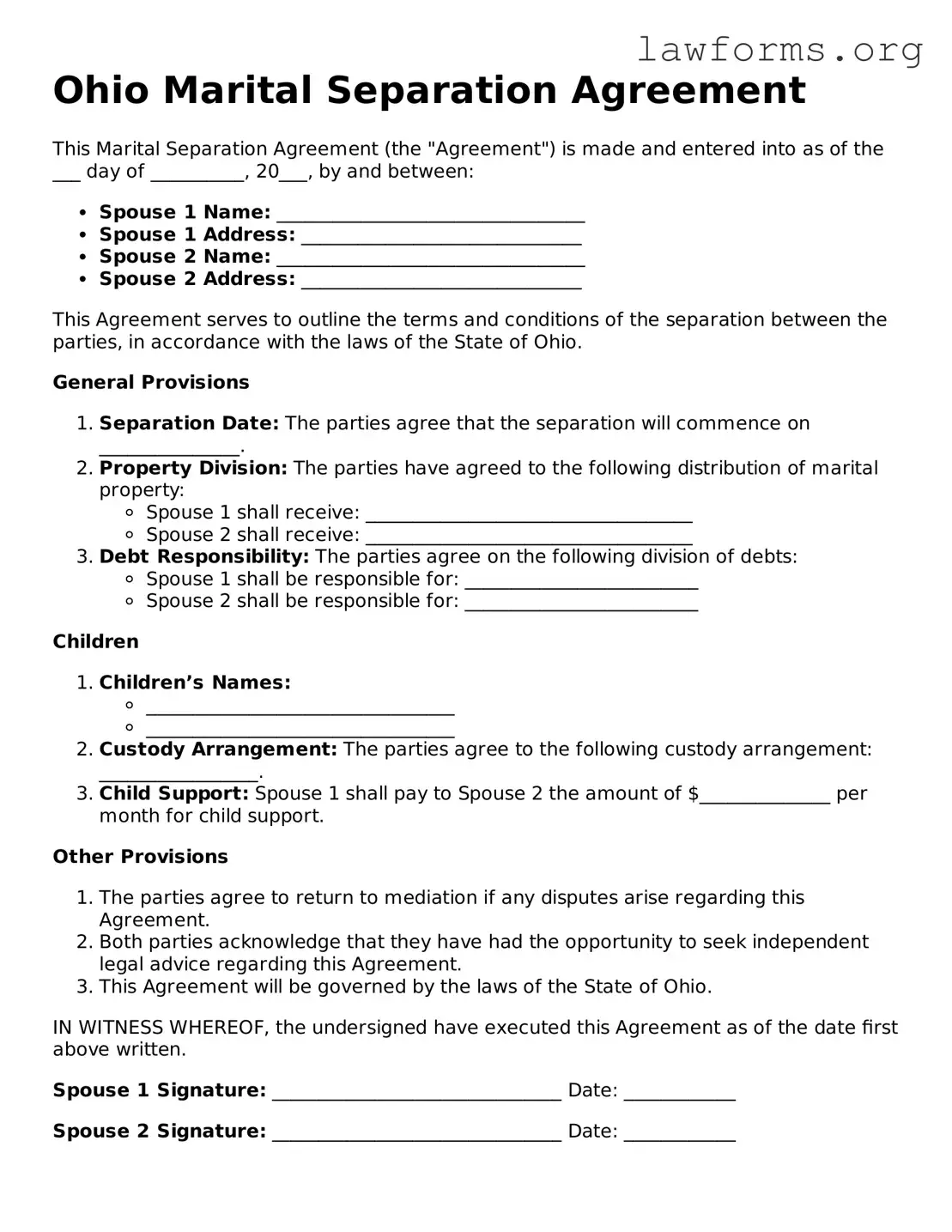Ohio Marital Separation Agreement
This Marital Separation Agreement (the "Agreement") is made and entered into as of the ___ day of __________, 20___, by and between:
- Spouse 1 Name: _________________________________
- Spouse 1 Address: ______________________________
- Spouse 2 Name: _________________________________
- Spouse 2 Address: ______________________________
This Agreement serves to outline the terms and conditions of the separation between the parties, in accordance with the laws of the State of Ohio.
General Provisions
- Separation Date: The parties agree that the separation will commence on _______________.
- Property Division: The parties have agreed to the following distribution of marital property:
- Spouse 1 shall receive: ___________________________________
- Spouse 2 shall receive: ___________________________________
- Debt Responsibility: The parties agree on the following division of debts:
- Spouse 1 shall be responsible for: _________________________
- Spouse 2 shall be responsible for: _________________________
Children
- Children’s Names:
- _________________________________
- _________________________________
- Custody Arrangement: The parties agree to the following custody arrangement: _________________.
- Child Support: Spouse 1 shall pay to Spouse 2 the amount of $______________ per month for child support.
Other Provisions
- The parties agree to return to mediation if any disputes arise regarding this Agreement.
- Both parties acknowledge that they have had the opportunity to seek independent legal advice regarding this Agreement.
- This Agreement will be governed by the laws of the State of Ohio.
IN WITNESS WHEREOF, the undersigned have executed this Agreement as of the date first above written.
Spouse 1 Signature: _______________________________ Date: ____________
Spouse 2 Signature: _______________________________ Date: ____________
